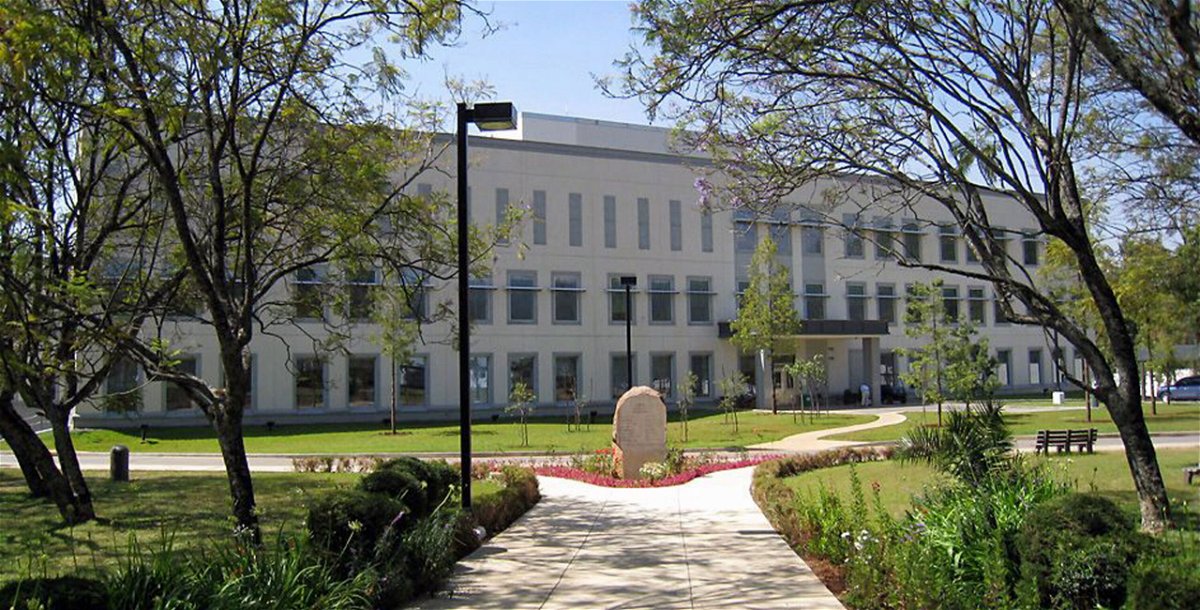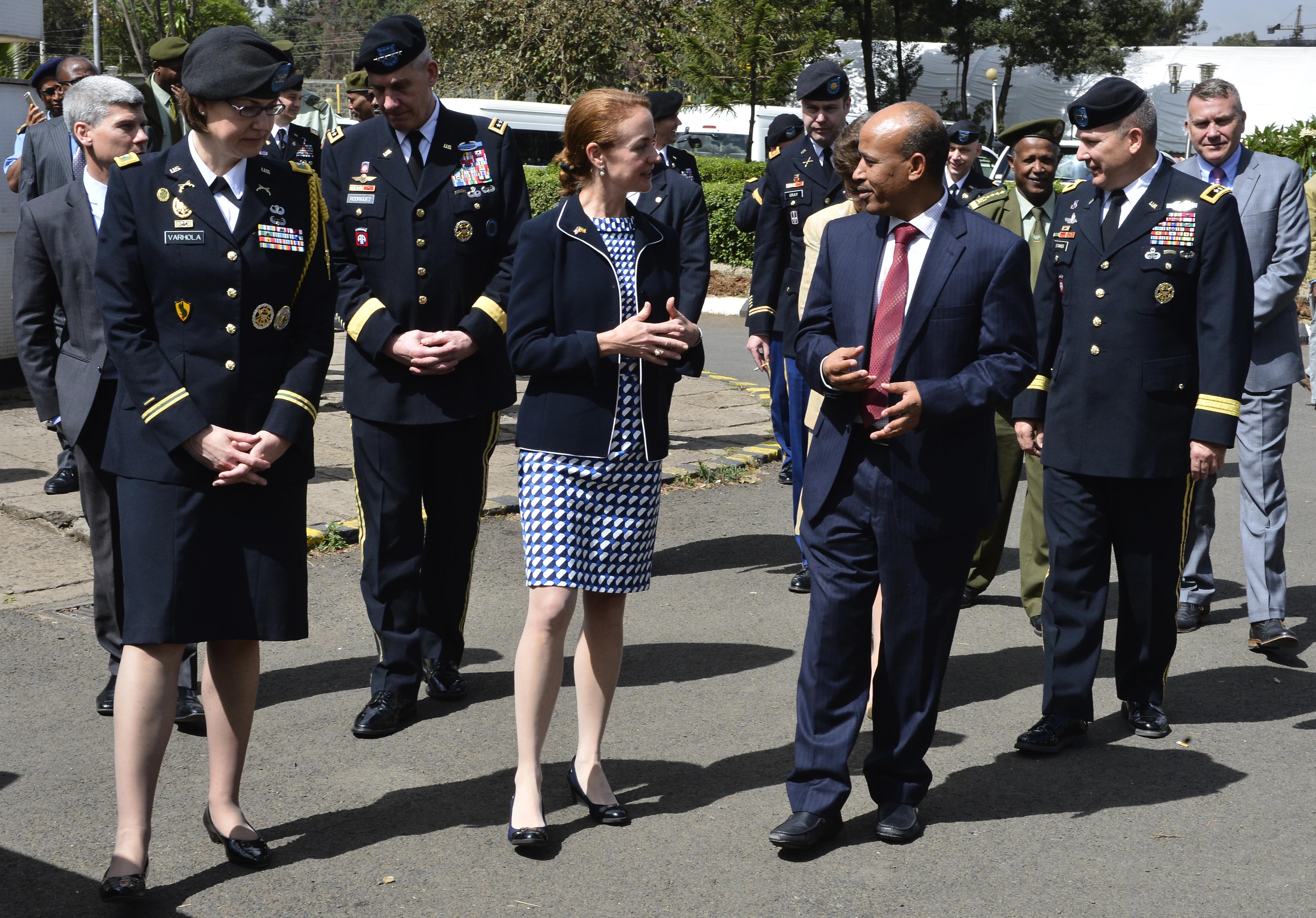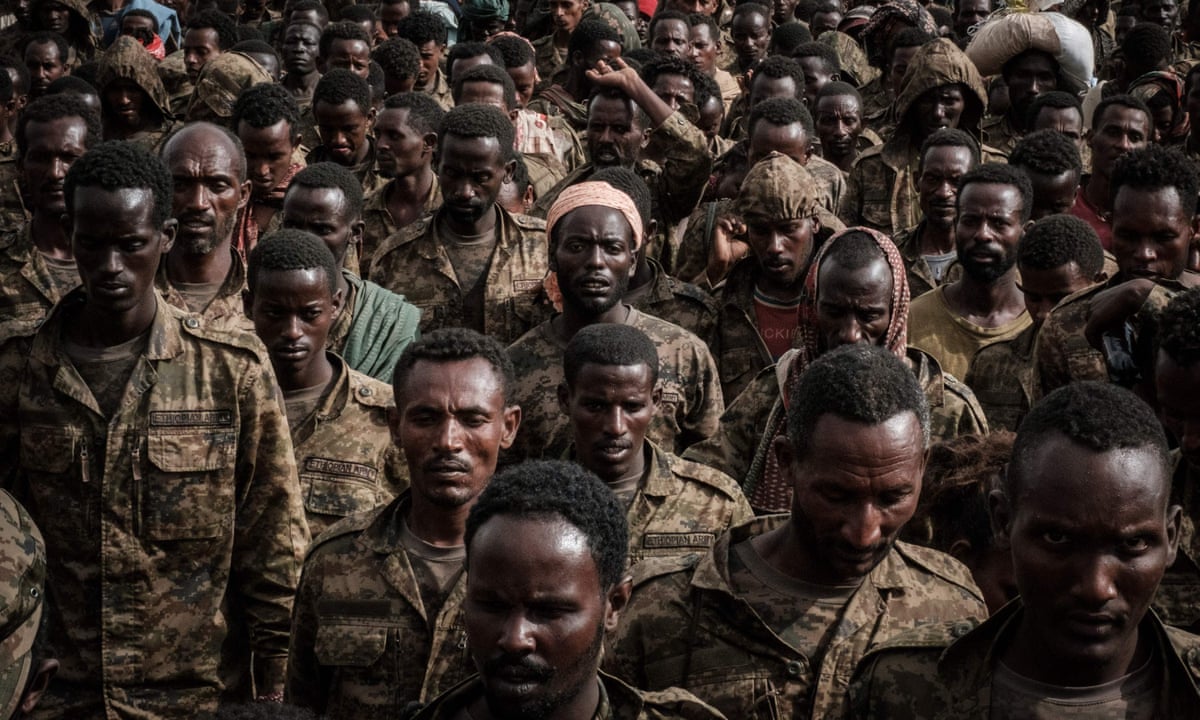Us Military Ethiopia - Abiy has reportedly traveled to the frontline of the conflict to lead government forces in the fight against TPLF militants, prompting citizens of Addis Ababa to take up arms and head, according to Ethiopian state media, making dramatic calls to defend.
Feltman said that in a recent conversation with Abe, the Ethiopian leader, "has expressed confidence that he can achieve his goals militarily." The resolution - known as HR-128 - condemned the excessive use of force by the Ethiopian security forces;
Us Military Ethiopia
 Source: i0.wp.com
Source: i0.wp.com
the detention of journalists, students, activists and political leaders; and the misuse of anti-terrorist laws to suppress political and civil dissent and press freedoms. © 1995-2023 Newsmatici Inc., publisher of EIN News · All rights reserved · Privacy Policy · User Agreement Finally, in 2018, one week after the April 2 swearing in of Abiy Ahmed as the new prime minister of Ethiopia, the US House of Representatives unanimously requested that
Us Facilities In Ethiopia
The American public policy was usually freed in its criticism of the Ethiopian government. Ginbot VII, the most prominent, was founded in 2008 by Berhanu Nega, a university professor at Bucknell University in Pennsylvania, and another Ethiopian expatriate, Indergachio Sage, in Washington, D.C.
before the group itself was founded in Eritrea. In the past, the United States of America viewed Ethiopia as a security pioneer in Africa, which is now severely affected by the mistrust of the Abiy regime's actions against its own people.
The conflict in Tigray has security implications for the entire Horn of Africa, a region in which the United States has been heavily involved in fighting extremism, supporting democratic transitions, coordinating aid efforts, and managing refugee flows.
In December, Human Rights Watch said Tigrayan rebels were killing dozens of civilians in occupied areas, adding to the brutality of the war. The struggle once brought a close relationship with the United Nations into a great struggle.
 Source: ktvz.b-cdn.net
Source: ktvz.b-cdn.net
Why Did This Happen?
Mr. Biden has granted trade to Ethiopia and threatened sanctions against its leaders. Neighboring African countries are openly worried that Ethiopia, long fixed in a volatile region, could become a source of instability. "This is a terrible development and very timely in what is now a brutal year of war," Coons said.
"And what I fear is that it can play an opening in a long and tragic game, which I will explain very much in the same lines, like many wars in the former Yugoslavia." According to the United Nations, at least 9.4 million people in northern Ethiopia are in need of immediate assistance.
But the siege imposed by the Tigray government means that less than 10 percent of the aid to the region has reached the needy, the group said. "We know that the diaspora is here in the most powerful country in the world, we will try to move things in Ethiopia, because the policy adopted by the United States of America is likely to be followed by other countries.
T.P.L.F. And his supporters fled armed to the country and mountain places, where they waged war. The Ethiopian army suffered a humiliating defeat and was forced from Tigray in June, and many thousands were captured. Meanwhile, Ethiopia's global remittances were estimated at $4.6 billion in 2017, according to a report commissioned by the European Union.
The largest part comes in the United States of America because of the population and because there are more people living elsewhere, says Mr. Teodoros. The world praised Mr Abe and Mr Asia for the historic peace agreement they signed in 2018, ending two decades of hostility between their countries and paving the way for Mr Abe to win the Nobel Peace Prize a year later.
"The greatest concern is for us and our strategic allies. We will be forced to respond militarily or be forced to compromise politically. The most important thing now is to protect vulnerable people before they are caught in swift action against the horses." extract." Military Industry Today from EIN News Desk and EIN Presswire

publication) After the 1991 revolution that overthrew the military regime and installed the current government, Ethiopia returned to the United States.Since the 2001 and 9/11 attacks, US-Ethiopia relations have strengthened with Ethiopia, seen as a key barrier against radical Islamism and terrorism in the Horn of Africa
But some observers say that the ongoing political tensions in Ethiopia could affect US-Ethiopian relations, adding that the US foreign policy in Africa is moving more towards the rise of China and Russia, not terrorism, the biggest threat. After 1960, when Washington gave aid for the 40,000 strong Ethiopian army
- US military support ria to Ethiopia gradually increased. In the 1960s, at the height of US involvement, more than 300 US personnel were serving in the MAAG. Additionally, approximately 23,000 Ethiopian ministry personnel, including at least 20 who later became members of MEDIC, received advanced training directly from United Nations personnel.
About 4,000 of these soldiers were deployed to the United States, including Mengstu Haile Mariam. Since 1974, the Ethiopian Armed Forces have been completely dependent on the United States for military hardware and spare parts. Kenyan President Uhuru Kenyatta, who heads the Security Council, said the armed forces were to step in because of "threats to the country".
He did not name any country that might be at risk, but Somalia and Ethiopia are suspected. reconciliation On March 24, the Ethiopian government announced what it called a "humanitarian war with rebel forces", saying that it was doing so because thousands of people from Tigray, where food aid had not been delivered since December, began flooding in the borders of the region.
to ask for help. In early November, the rebels advanced on the capital city of Addis Ababa. But then Mr. Abiy, backed by armed drones, took the Tigrayos back to their northern homeland. The battle has since died down, although fighting continues in the Longe and Amhara regions, which border Tigray.

As of March 31, 1954, the United States had given Ethiopia $3.8 million worth of small arms, vehicles and ammunition. In October 1954, Washington gave Ethiopia another 5 million dollars in aid. And in November 1955, the Chiefs of Staff of the United Nations agreed that Addis Ababa needed military aid at a minimum of US$5 million per year, supplemented by the direct sale of air and naval equipment.
Despite these increases, the Ethiopian government complained that military aid was insufficient to meet its defense needs. At the beginning of 1956, Addis Ababa therefore appealed to Washington for "a combination of donations and a long-term military loan to support the defense needs of the country", including the suppression of Eritrean dissent.
In October 1956, the US National Security Council issued a report on the security request, which included a recommendation that US aid to Ethiopia be increased. After the fall of Haile Selassie in 1974, US aid initially continued without interruption, although it was accompanied by proposals for a negotiated settlement with Eritrea.
After the November 1974 assassination of several high-ranking imperialist officials, the United States postponed signing the aid agreement pending, but aircraft and tank shipments doubled the dollar value of military aid in 1975. Because of the "arms imbalance in the region" through Soviet aid to Somalia, Washington proposed to renew Ethiopia's arms inventory for three years with US$ 200 million of surplus material from the Republic of Vietnam (South Vietnam).
. The US also allowed the transfer of a squadron of F-5 fighter jets from Iran to Ethiopia. Total US arms sales to Ethiopia in 1974 and 1975 were $35 million. The Tigray People's Liberation Front (TPLF), the main political party that represents Tigray, has a history of dominating political and coalition leadership at the national level, despite the fact that Tigrayans represent an ethnic minority.
Between 1991 and his death in 2012, Tigrayan politician Meles Zenawi ruled Ethiopia autocratically through a period of rapid development. Aided by the TPLF-dominated coalition, it received aid from the United States and Britain, resolved difficult negotiations between Sudan and South Sudan after the 2011 partition, and undertook peacekeeping missions in Sudan.
 Source: ethiopianembassy.org
Source: ethiopianembassy.org
However, his government failed to ease the brutal war with Eritrea, isolating ethnic groups including the Somali, Oromo and Amhara—each of which has a larger population than Tigra—and consolidating a central autocracy. Report: US ambassador warns Ethiopia conflict could spiral into military conflict Turmoil in northern Ethiopia is part of a wider conflict due to weather, climate change and rising food prices, exacerbated by the war in Ukraine, which has escalated the crisis to over 20 million people.
the wastes of Africa "Ethiopians came to America for other reasons, because it represents the ideals of freedom, respect for human rights, better opportunities for their children, and the belief that if you work hard enough, you can achieve anything. There is no limit," he said.
Mr. Tewodros reached the level of ink. A series of victories in late 2021 signaled that the Ethiopian Empire was on the verge of recovering from the battle, achieved by its allies in the Persian Gulf region.
As home to the ancient kingdom that ruled Ethiopia and the wider region, Tigray was isolated from the central government until the 20th century. This ratio is more than 60 percent. However, T.P.L.F. a dominant force emerged in the rebel coalition that overthrew the Marxist republic in 1991. The party, taken over in 2018, sought to shed its power and influence.
The actions of Radu, the leader of the Tigris, were enraged, and they retired to the citadel of the Tigris. The tension is increasing. "We just want to make sure we don't get a situation where the American people are waiting for something that's never going to happen?"
A senior government official, speaking on condition of anonymity, told reporters at a briefing this week. "We expect that they will come to Afghanistan, when in fact it is not going to happen." It is necessary for them to remember what the norm is, and the norm is to go out on the commercial route [of flights] while it is available.
 Source: i.guim.co.uk
Source: i.guim.co.uk
On May 22, 1953, the U.S. and Ethiopia signed an agreement giving the U.S. twenty years at the Kagnew communications station in Asmara. At the time, Cagney was one of the biggest radio and communications watchers in the world.
The United States later established its own facilities, with 4,000 American military personnel trained to monitor Soviet radio communications throughout the country. The two countries also signed a joint defense assistance agreement, under which the United States will provide US$5 million to equip and train a 6,000-strong Ethiopian division.
The United States Military Advisory Group (MAAG) was sent to Ethiopia to administer this program. The conflict first arose when Abiy sent Ethiopian troops into the Tigray region in response to Tigrayan forces attacking government military installations.
The military operation, supported by forces from neighboring Eritrea, ultimately failed after TPLF forces were forced out and the Tiger capital Mekele was recaptured in June. "I don't think he ever anticipated the outcome of ... many regional, ethnic forces advancing on AIDS," Coons told Foreign Policy in a recent interview.
“I hope Abhi uses this last moment to negotiate in good faith.
us army in ethiopia, us relations with ethiopia, us troops in ethiopia, us interest in ethiopia, us forces in ethiopia, us involvement in ethiopia, us military base in ethiopia, us army troops in nigeria